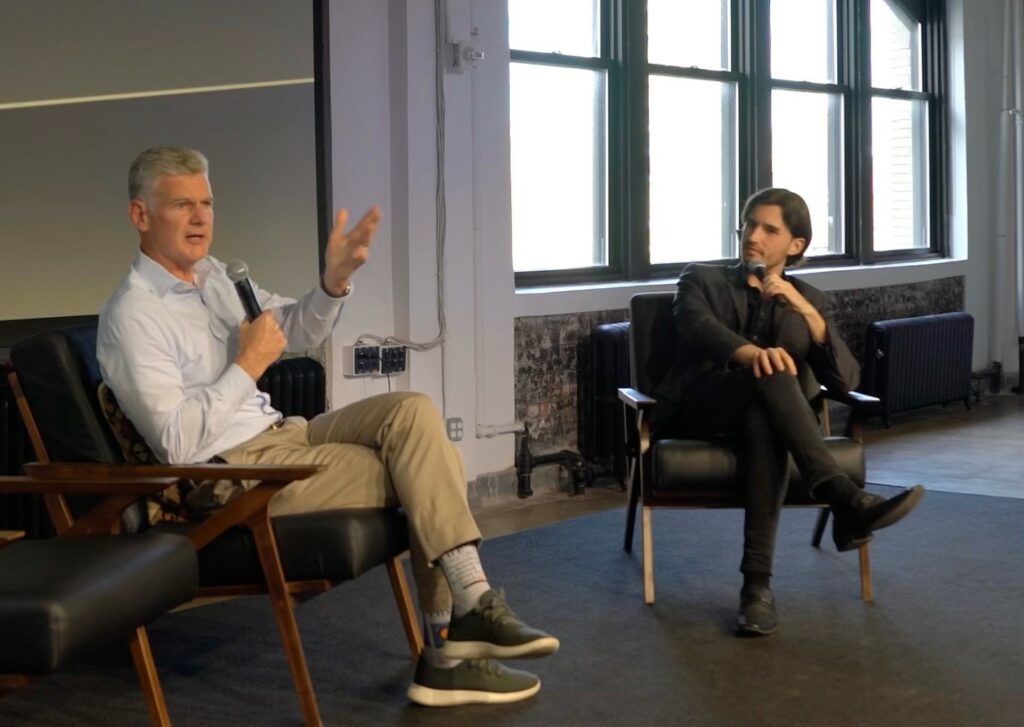Hartmann, who leads both a crypto fund and a metaverse fund, gives us a front-row view to what we can expect from web3 in 2024
By Riley Kaminer
Few Miami web3 investors have the diamond-handed crypto creds that Felix Hartmann has. In 2018, he launched Hartmann Capital, a crypto asset hedge fund. In 2021, Hartmann and team launched a $15 million metaverse-focused venture fund – with plans to launch a second one this summer.
More broadly, it seems like the market is warming up to the opportunities in the metaverse. Latest case in point: Disney invested $1.5 billion into Epic Games. So what does it all mean for the web3 arena, and what role does Miami play in all of this? To find out, we interviewed Hartmann.
This interview has been condensed and edited for clarity.
Refresh Miami: What are your thoughts on the recently-released Apple Vision Pro? What does it mean for the VR landscape?
Felix Hartmann: The Apple Vision Pro has highlighted VR’s recent advancements, previously obscured by poor marketing and accessibility. Mark Zuckerberg’s acknowledgment of the Quest 3’s value, despite its capabilities, underscores the challenge of recognition – something Apple addresses with its global distribution and in-store demos. This strategy not only makes VR accessible but also showcases practical applications beyond gaming, such as spatial video and enhanced movie watching, making the technology more relatable to the general public.
Once we acknowledge that the Apple Vision Pro is an overpriced first iteration that’s not meant to be a mass market product, it’s clear its value lies in demonstrating VR’s potential. The Apple Vision Pro, while just a starting point, is a significant step towards bringing VR closer to mainstream acceptance.
What role does gaming play in spatial computing?
Gaming, in my view, plays a transformative role in spatial computing, acting as a bridge to the next major medium of interaction following the smartphone. Our fund operates under two core theses: firstly, the emergence of spatial computing as a crucial platform, akin to the leap seen with smartphones; and secondly, the evolution of gaming into a new form of social media. This perspective challenges the conventional view that gaming is merely a niche activity for younger demographics. The reality is far broader, with an estimated three to 3.5 billion gamers globally, encompassing nearly half the world’s population across mobile, desktop, and console platforms. This demographic shift is not just about playing games; it’s about the integration of gaming into the daily social fabric, particularly among younger generations like Gen Z, who prefer virtual spaces in Roblox, Fortnite, and Minecraft over traditional social media platforms.
The confluence of the internet and social media into spatial realms is best exemplified through virtual reality, where early successes like VR game Gorilla Tag illustrate the potential for social interaction within gaming environments. Here, gaming serves as both the activity around which people gather and the ecosystem that supports a range of related interactions, from professional gaming and streaming to spectating. This evolving landscape underscores gaming’s integral role in shaping the future of spatial computing and social interaction.
How do you view centralized versus decentralized approaches to the metaverse?
In the metaverse landscape, we see a continuum from closed systems, like Apple’s, which prioritize security but limit interoperability, to open ecosystems advocated by companies like Meta, which promote developer freedom and cross-platform compatibility. This openness not only encourages innovation but also empowers developers and users, creating a competitive environment that benefits the broader community.
On the topic of decentralization, the key is first to build engaging worlds that attract users. The real value of blockchain and decentralization becomes evident when there’s genuine interest. For example, our approach allows for traditional gaming experiences with the option for players to utilize blockchain features, such as minting in-game items as NFTs. This balanced approach aims to serve a wide audience while leveraging the unique benefits of Web3 technologies, ensuring both accessibility and the forward-looking potential of decentralized systems.
What do you think the crypto market will look like this year?
I’ve been sitting on panels talking about the potential of a Bitcoin ETF since as far back as 2017. So I’d definitely say that the recent approval of the Bitcoin ETF is a major milestone for the crypto market. In just over a month, Bitcoin ETFs have accumulated $10 billion in assets, signaling a significant shift in how traditional finance views and engages with crypto assets. The expansion into Ethereum and potentially a Solana ETF by year-end further illustrates the diversification and maturation of the market.
The SEC’s approval of the Bitcoin ETF reflects a notable shift in regulatory posture towards cryptocurrencies, moving away from the stringent oversight seen in the wake of the FTX collapse. This changing regulatory landscape, evidenced by internal challenges and legislative critiques against the SEC, is likely to spur a new wave of innovation within the crypto space. The more neutral stance of regulators is expected to encourage the launch of numerous tokens, fostering a vibrant ecosystem of new projects and investment opportunities. This shift sets the stage for a promising bull market in the crypto sector over the next 18 to 24 months, underlining a period of significant growth and development.
How can Miami benefit from this growth?
Miami’s rise as a tech ecosystem is on a long-term growth curve, but we’ve seen some ups and downs since 2021 when it seemed like everybody was moving here. Despite a period of adjustment where some newcomers departed, the city’s core strength has increased, signaled by significant investments and high-profile moves, including Citadel and Jeff Bezos. This resilience underscores Miami’s potential to thrive in upcoming bull markets, attracting a fresh influx of talent and investment due to its favorable tax environment and growing ecosystem.
But Miami faces a challenge in attracting startup talent to match its capital influx. Despite a concentration of venture capital firms and hedge funds, there’s a noticeable scarcity of local startups in our sector. This gap highlights the need for Miami to enhance its tech talent pool, perhaps through better educational programs and opportunities in STEM fields. Strengthening this aspect is crucial for Miami to maintain its momentum and appeal as a hub for innovation and investment in the crypto and broader tech landscape.

READ MORE IN REFRESH MIAMI:
- Meet the asset management firm that just launched a $30M metaverse fund
- AEXLAB team launches VAIL VR, part of VR game engine for multiplayer games
- Salsa Valley onboards users into web3 with a spicy mix of games, a metaverse, and crypto
- From DEA agent to crypto crimefighter: Lili Infante’s journey to secure the blockchain





